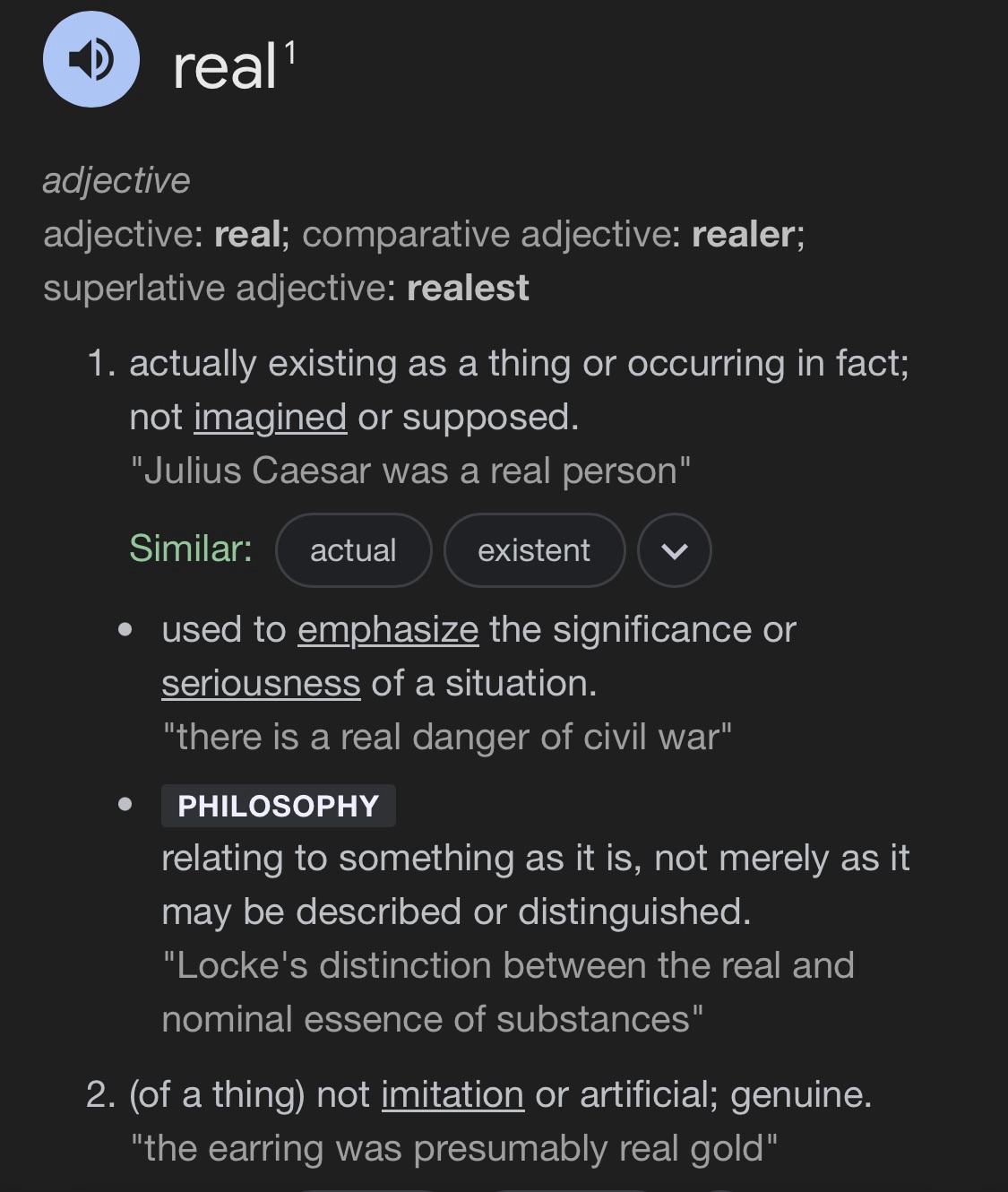Five ways I make my books feel real / Christian writing advice
What does “real” mean? Always good to start with a definition, isn’t it?

(I find definitions so interesting. For instance, I never knew that “realer” was an actual word!)
So, how to make our books feel as if they truly exist, as if they are fact, not imagined or supposed. How to make them feel genuine and not artificial or fake? This is an important question to ponder as a writer because we want our readers to believe that our books are real (even if they know they’re not). We want the reader to feel as if they have spied through into someone’s real life, that they live in a real world.
This doesn’t mean that we have to make our books similar to our real world. They can be as fantastical as we like. Keeping that feeling of reality is possible through any genre, characters, or story. These ten tips can help you with any book you are writing. They’re something to check your book against, to see how real it might feel to the reader.
As the writers of our books, we need to remember that even if our characters and stories feel real to us, we don’t have the perspective of someone reading it for the first time. Because we’ve spent hours creating this world, these characters, and what happens to them, we are going to feel that it’s real because we’ve spent so much time in our imagination there. It takes a lot longer to write a book than it does to read one. So let’s keep in mind that our reader isn’t going to perceive our book as genuine as we see it. They don’t know as much as we know.
So, now for the five things. These are just some of the many ways you could make your book feel more real. Read these, and then see if there’s any others that were sparked by this reading.

1: Be Specific
Details, details, details. Details are so important when it comes to bringing your story to life. Would you rather read about the “trees and sun”, or does “Sunshine dripped through oaks and landed in mud matched patches on the concrete sidewalk” paint a more real picture in your mind. It’s almost as if the first example makes me see a simplistic cartoon, where the second is like watching a movie. There’s almost sound bound within the visuals.
2: Make Things Go Wrong
Let the bus be late, your character step in a puddle, and someone mumble over their words. Real life is full of things going wrong. Let that happen in your book too. Whether this is things wrong with your character (no one likes to read about little miss perfect), or how your books world is broken in ways (ours sure is!). Think of ways to be imperfect that serve your book and the characters fears. Let the imperfections drive your story on. For instance, if your character is afraid of being alone, maybe in her futuristic world there are drafts where your family members might get taken away. This can amp up the tension and make your story more riveting to read.
3: Check Your Dilalogue
Often the way we write dialogue is a little more dramatic than it is in real life. Of course the way your characters speak with differ depending on where they’re from, what era it is, etc. But I’d suggest reading your dialogue out loud. I know that I’ll be doing this in my historical fiction project, “Swimming with Lupins” that I’m currently editing. I’ve always found that when I read my manuscript out loud, all the problem areas appear; and one of those problem areas is unrealistic dialogue. Especially because dialogue is spoken, reading it can show how it would sound in real life. You could even add accents and accentuate it a little for fun.

4: Include The Mundane
We all know that life isn’t just a series of exciting events, with zero boredom, or mundane days. Often, it can feel quite the opposite. So don’t skip this out in your book! Instead ensure that your reader sees your characters doing the normal stuff too. This doesn’t mean that you need to include chapters and chapters of irrelevant content, them going to work, them going home, them eating dinner, them doing the supermarket shopping. We don’t want to be bored, and often, the reason for reading is to escape the normal for a bit. But it still feels good to relate to the characters. The mundane can be in the small things: brushing teeth, making dinner, tying up loose shoe laces, buying coffee, getting sick – whatever you decide. How I see it, you can write your story on top of the mundane. An important conversation while brushing teeth, a robbery taking place while cooking dinner, a romantic moment while tying shoes…you get the picture.

5: Make It Actually Possible
Have you ever read or watched something, and thought, “They definitely wouldn’t have actually been able to do that”? I have, and it always shatters the scene I’m in and makes me realize it’s not real at all, and actually not even like reality. You don’t want that for your book, and neither do I. So when we’re writing, let’s steer clear of our characters doing things that are virtually impossible. Jumping off cliffs and not dying, that kind of thing. This doesn’t mean that there can’t be things going on that could never happen in our world.
For instance, if your character has secret wings, of course they can jump off a cliff and not die. But be careful that whatever is happening is believable. My project “The Cloud Boy” has a world where my characters can go inside the clouds into different scenery. Of course, this is completely unrealistic for our world, but if I’m telling you in the book that that is reality, and it makes logical sense in the book, then it works. It might not be for everyone, but it works.
That concludes my five tips for making your book more realistic, and helping it come alive for your readers – and for you. These could be implemented at different stages of writing a story, whether that be the drafting process, or when you’re going back and editing. May they serve you well.
